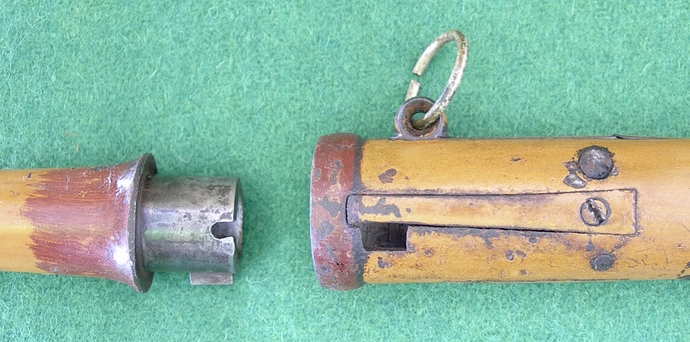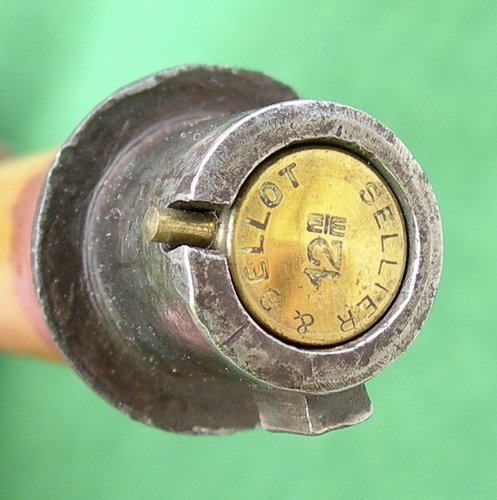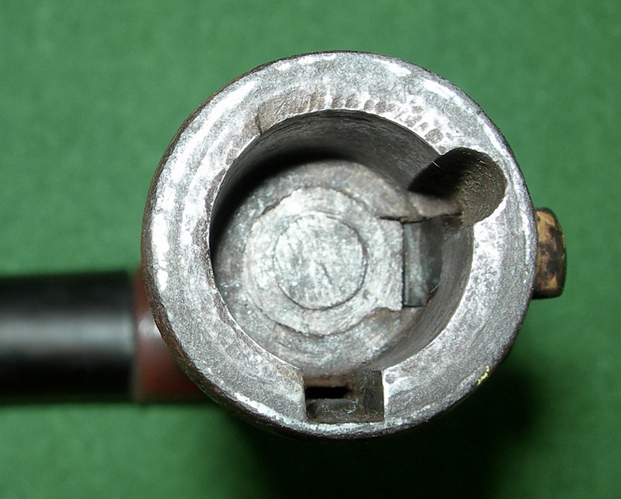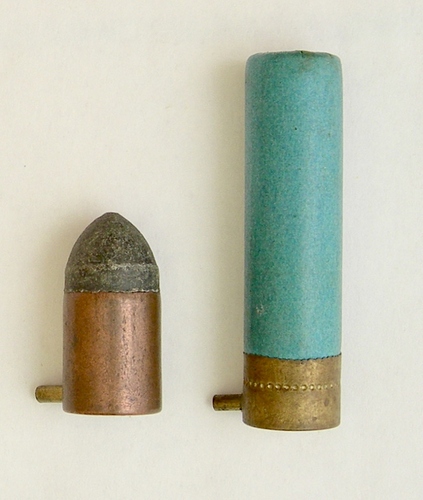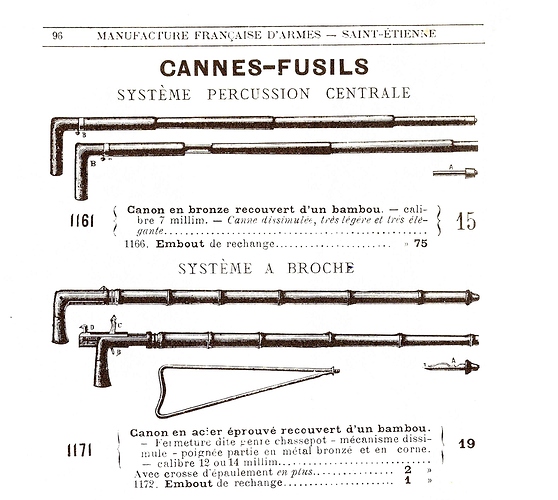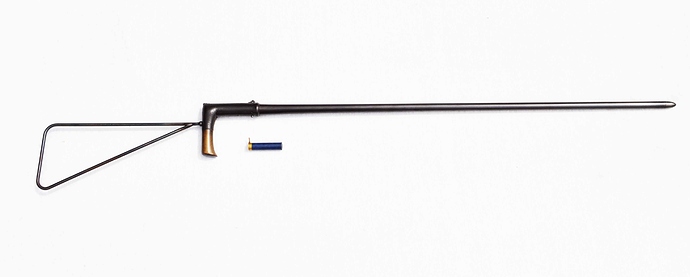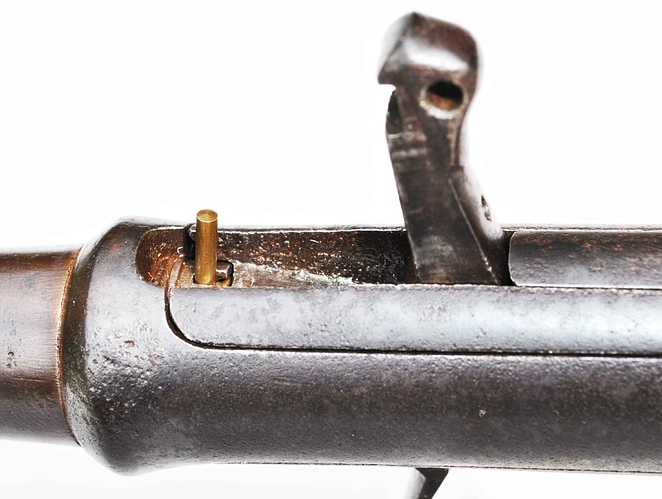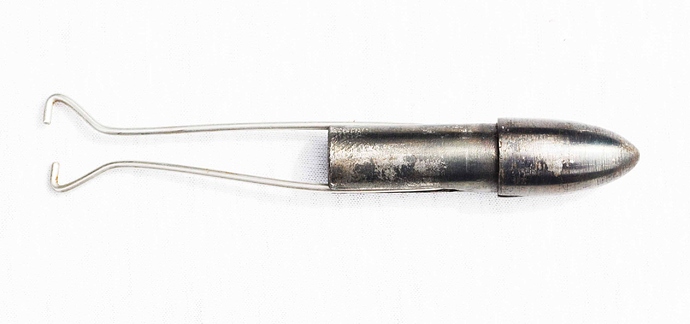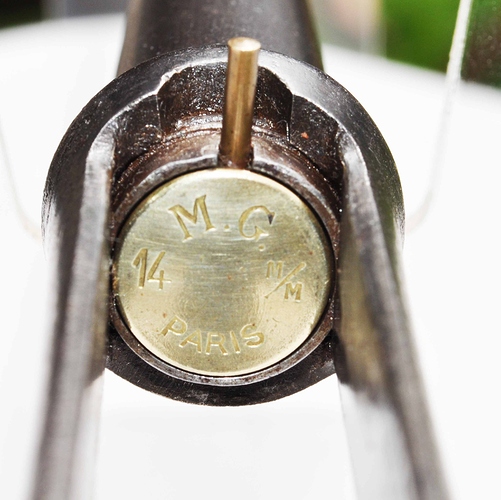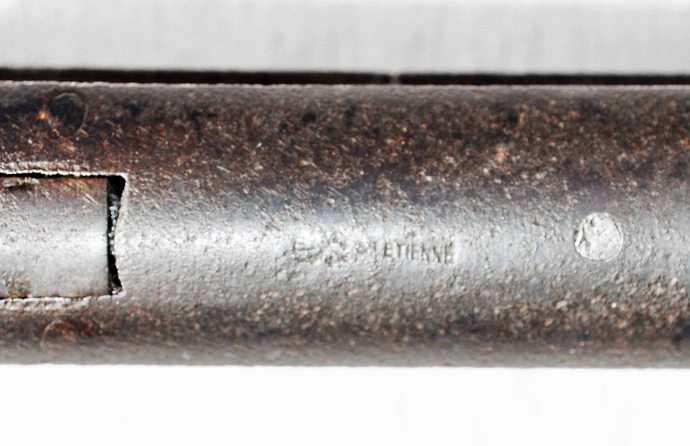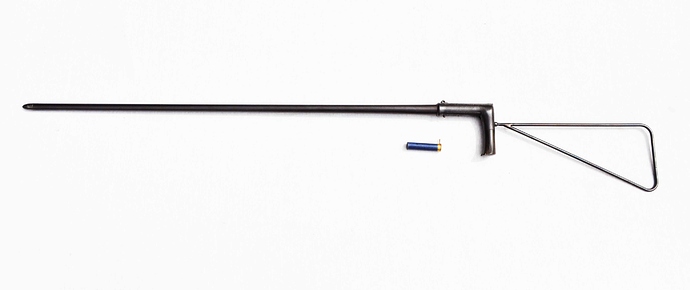Description of the walking stick – rifle, 14mm pinfire.
At first sight this stick isn’t different from the others.
This is actually a “hidden weapon” concealed inside a pinfire rifle, 14 mm gauge.
A stick, of very common use, in an age where they walked a lot.
The firing mechanism is hidden in the pommel of the stick.
The flat hammer and the folding trigger are well hidden, almost “invisible” when not in use.
The sword sticks can easily serve as a defensive weapon, the stick - rifle is more commonly associated with a weapon of poachers.
It’s true that the loading of the rifle requires several manoeuvres to be operational.
• You must remove the cap of the barrel, which also serves as a “cartridge puller.”
• After unlocking the back of the pommel, the mechanism slides, the cylinder head opens, allow insertion of the cartridge.
• With the hook cap, you pull the hammer, which releases at the same time the trigger.
• Closing and locking the breech.
Only after this, the firing can take place.
Regardless the use of a removable shoulder butt, which screws onto the pommel, the target is very approximate.
The power is also reduced because the 14 mm gauge does not make that much capable of shooting small prey.
This stick will be a great success as a weapon of “Gentleman Poaching.”
Features:
Black steel barrel, smooth bore, gauge 14 mm pinfire.
Overall Length: 1190 mm, with shoulder butt and barrel cap.
Cane length: 890 mm with cap.
Shoulder butt length: 300 mm
Total weight: 1010 grams
Stick weight: 840 grams
Original wooden pommel.
Punches and markings:
The barrel, frame and the system block / head contain the number “39”.
Proof mark of St Etienne, partially readable, from April 1879 till August 1885, just behind the folding trigger.
On the left side of the breech block the name of the dealer:
"J. RUCHON St Etienne "
"J. ROUCHON St Etienne "



